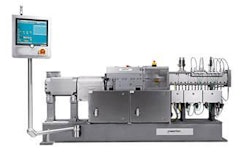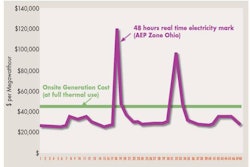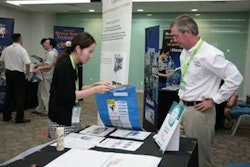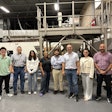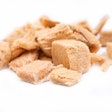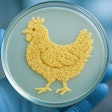Step 1
Make sure your team is aware of the amount of energy the dryer consumes and how that can be influenced by clever optimization and decision making. Get the correct key performance Indicators for energy in place and make those part of the plant’s performance evaluation.
Step 2
Reduce the amount of moisture evaporation necessary. Development of any new product recipe should take the cost of moisture evaporation into account, and when selecting pre-conditioners and extruders, big steps can already be taken to avoid the need for drying as much as possible. Too many petfood producers count with average costs of drying per ton of finished product, without taking into account how much water has to be evaporated. For two dry petfood products produced at the same throughput rate, but with different recipes, or on different extrusion equipment, the amount of required moisture evaporation can easily differ by 50%, which means roughly 50% difference in specific energy consumption.
When your plant’s key performance indicators only keep track of cost of energy per ton per hour or even worse per day, week or month, you will never be able to figure out how to optimize the process. For optimization it is essential that you track energy consumption per minute against actual moisture evaporation for every extrusion line.
Step 3
Make sure you always re-use the cooler exhaust air as make-up air in the dryer. You need filters in between the cooler (post-coater) and dryer to avoid excessive pollution in the dryer, and those filters need attention. But the amount of energy you lose by blowing warm cooler exhaust air into your air treatment system while taking fresh dryer make-up air is enormous. Think of the unnecessary investment—and operational cost—for exhausting double the air volume in case of a separate dryer and cooler exhaust.
Step 4
Use in-line Rh meters to control the exhaust air volume, so all exhaust air is nearly saturated (80%–90% relative humidity) with moisture. If that causes condensation in your ducting, check to see if you can further improve the insulation of ducting, cyclone, etc., because the closer you can get to fully saturated air, the more efficient your drying process will be.
Once exhaust ducting is properly insulated, optimize airflow and product flow inside the dryer to ensure that air continues to pick up moisture on its way through the product until it reaches the exhaust, at which stage it should be 80%–90% saturated. If this causes any issues with condensation inside of the dryer, then it is likely you have internal air leaks, bypasses and/or cold bridges.
Step 5
Make sure all fans are controlled by frequency converters (VFD) saving electricity compared to any configuration with manual or automatic dampers. The VFDs should be controlled to automatically compensate for fluctuations in bed depth (resistance) so air volume does not fluctuate unnecessarily. Generally the best way to dry petfood is to first apply maximum air-volume/airspeed and then heat up that air to the temperature required. However, setting air-volume to maximum without some way to automatically compensate when the bed depth is lower will lead to excessive airspeeds, causing kibbles to fluidize or fly into the air exhaust system.
Step 6
Check the mechanical construction of your dryer. Just like with a building, efficient energy consumption requires that the dryer is airtight (check product entry and discharge, door-seals), free of thermal cold-bridges (use a thermo graphic camera) and properly insulated all around (not just for efficiency, but also operator safety and comfort around the dryer).
Step 7
Organize frequent monitoring and cleaning of essential parts of the dryer and cooler. The main goal of course is food safety, but indirectly the results on energy efficiency should not be underestimated. Polluted dryer slats and air channels create resistance that the air-fans have to compensate for by using higher kWs to stabilize air volume.
Step 8
Check the control logic of the dryer. There are many ways in which clever control logic can help you to save energy. For example, burners should be switched off as soon as possible after a product run is finished. Many dryers continue to run at full air volume and high temperature while waiting for new product to arrive. That may take more time than expected, which is a totally unnecessary waste of energy.
Step 9
Continuously monitor the moisture level of product out of the dryer and cooler (use in-line microwave sensors, for example), thus avoiding overdrying. Overdrying is incredibly expensive, not only for wasting energy but for wasting throughput from the line. Too often, petfood plants are so focused on avoiding excessive moisture levels in finished product that they allow operators to overdry consistently. One mold or Salmonella trip-up can force all moisture profiles of finished product down, whereas what was needed was a root cause analysis to identify the specific circumstance that lead to the incident so it can be avoided next time.
Step 10
Check the product and air distribution in your dryer. If product is not uniformly exposed to the drying air, product will not have a uniform moisture profile. One side of the dryer might generate kibbles with too much moisture, potentially leading to mold problems. If these are fixed by increasing burner temperatures (as is often the case) the mold problems may evaporate, but so does much of your profit.



